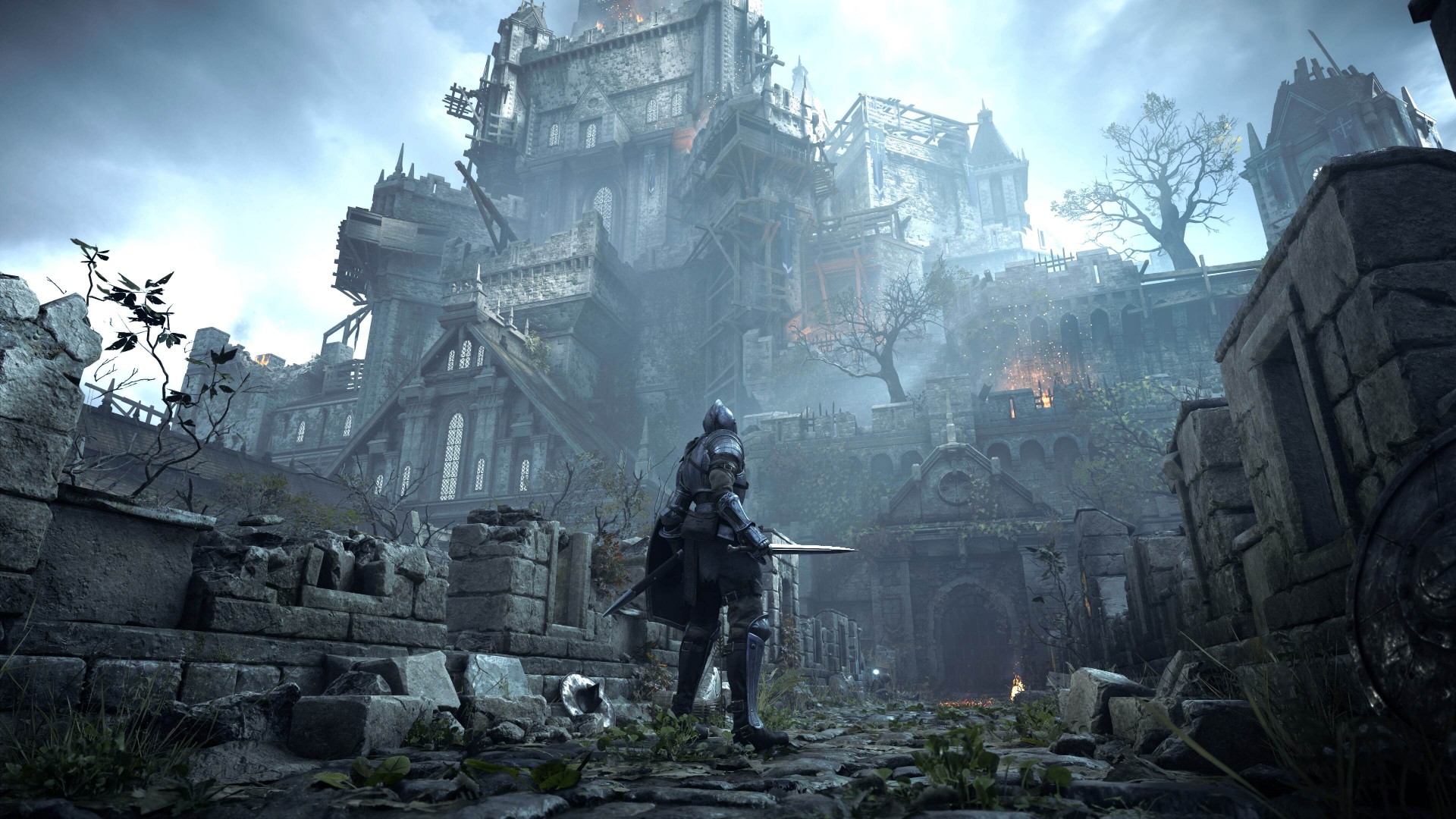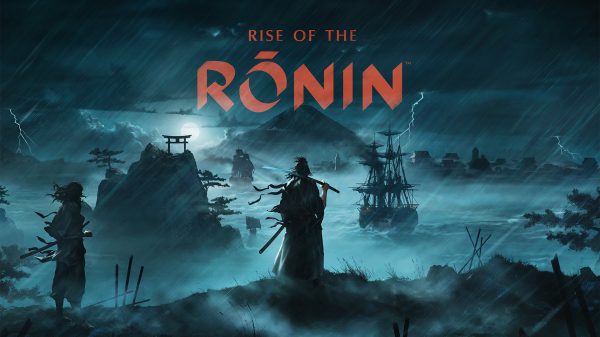FromSoftware and Miyazaki, a match made in heaven. 2009 was an incredibly formative year for the pairing, with the release Demon’s Souls for the PlayStation 3 (one of my most hated gaming systems of all time, though mostly because of that cursed DualShock 3). Unfortunately, Demon’s Souls almost lived and died on the PS3, as it had quite a complicated life on the system. It started out as a Sony published exclusive in Japan, but after the western market caught wind of the game and demand increased, Atlus retrieved the publishing rights in North America and Bandai Namco secured publishing rights in PAL regions. This weird publishing situation is the reason that the game kind of died outside of its niche, cult following. It’s also the reason why Dark Souls exists. Bandai worked together with FromSoftware to get this formula more widely appreciated and this was the only way. Bluepoint knocked it out of the park with the remake for Shadow of the Colossus and was the only team that I would have trusted with remaking Miyazaki’s action-RPG. After spending many hours with the game, it is perhaps the best launch title for a console I have ever experienced and it demonstrates how timeless Demon’s Souls’ design really is.
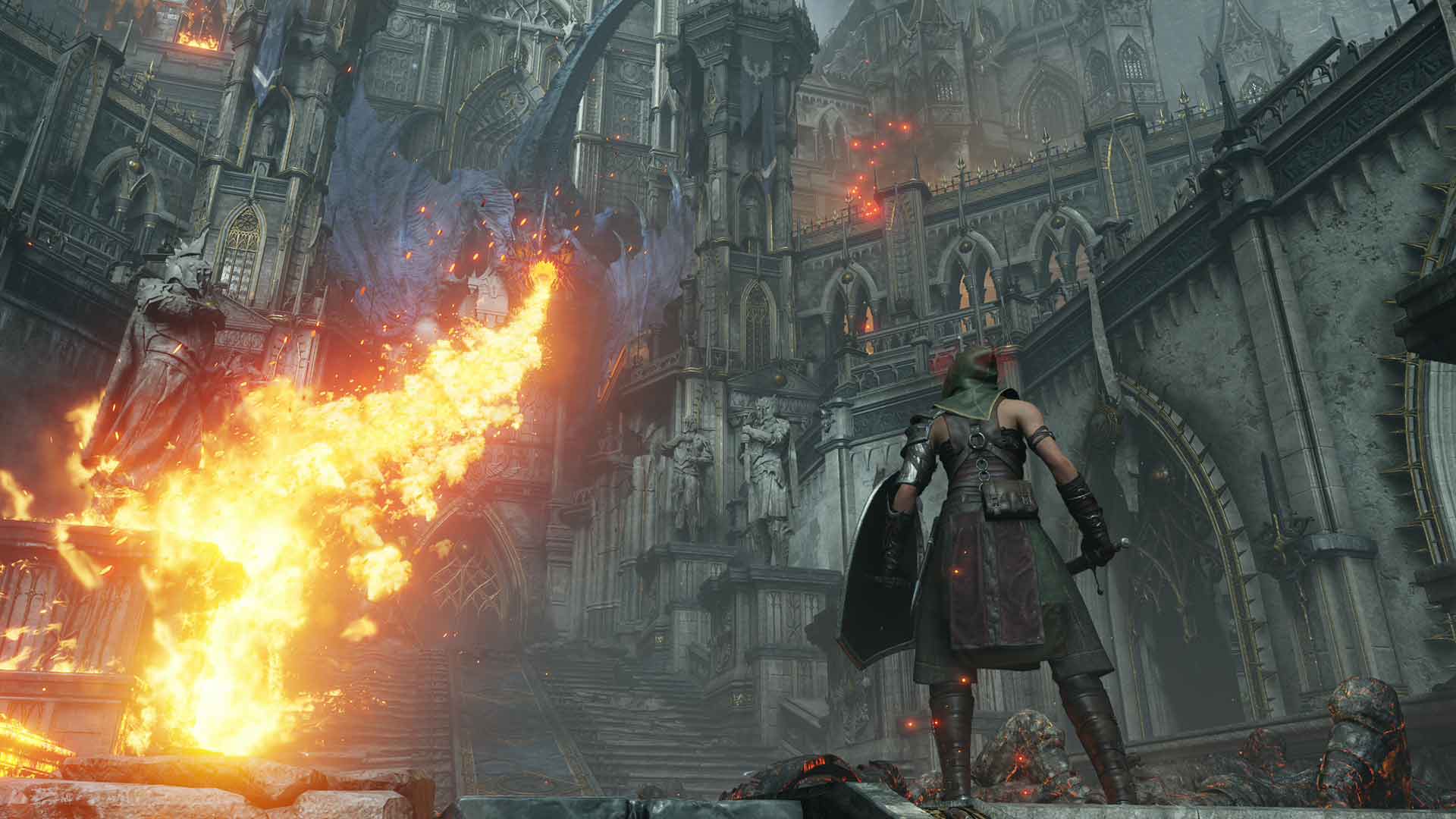
Demon’s Souls [DeS] is set in the land of Boletaria. The king has tried to harness the power of the Demon’s Souls to enhance his own power, but as a result, the kingdom is in a state of disrepair and powerful beings are all over the place. It is your job to fight through the denizens of Boletaria and harness the Demon’s Souls to contact the Old One. You basically reside in The Nexus, a tall, tomb-like area which holds people’s souls that are trapped in Boletaria. In gameplay terms, this is your hub area. For fans of the Dark Souls games, it would be like Firelink Shrine, and all your gear upgrades, item purchasing and stat levelling are done through here. It’s also where Demon’s Souls really separates itself from Miyazaki’s later games.
If you were to look at games like Bloodborne, Sekiro: Shadow Die Twice and Dark Souls, you’d very quickly see that the worlds in those games are almost like one big line which then spreads out to multiple points. DeS is quite different in comparison. There is the hub area which was previously mentioned, but then there are five warp points (archstones) to choose from. They all head off into their own designated areas and are not connected to one another. In some way, you could almost describe it as a Mario RPG, just with significantly higher quality. Each of these areas is completely unique and has its own theming for its design. You have the Boletarian Palace, which is very much about your classic high fantasy experience. Large, vast crumbling castles and towers filled with infantry and knights while also peppered with menacing dragons. The Stonefang Tunnels are themed around the excavation of precious materials for the use in blacksmithing. You will find a large number of upgrade materials here, both as drops from the enemies and as hidden goodies in the levels themselves. There is of course more to these worlds than these brief descriptions let on, but I have to leave some mystery for the player to experience. Regardless, because these levels don’t have to worry about connecting to one another so much, this also allows them to double down in their smaller level design.
Dark Souls was very much a bigger game than DeS in terms of scale and level design. It was a wholly interconnected world, where the depths of hell met with the peaks of a now dilapidated civilisation. DeS would rather you focus on its atmosphere and guide you through its organically laid-out world. You’ll travel through the tight passages and alleys of a keep’s township or try to find your way through an intricate cave system. The level design is much more labyrinthian in nature but it allows you to experience a game world in a way that many other games fail to live up to. Instead of just feeling like a level or a game world, these areas very much feel lived in. Structures are thematically appropriate to the best degree and the environmental storytelling is second to none. You get the complete picture in a world that you aren’t familiar with and it’s such a unique experience. Where the biggest difference between DeS and Miyazki’s later works lies is with the Archstone/Bonfire placements. In pretty much every FromSoftware game since Dark Souls, Bonfires have been used as checkpoints of sorts. This has allowed the team to focus less on boss encounter design and more just on general, larger-scale world design. DeS uses its Archstones (this game’s version of Bonfires) to mark out progression rather than serve as checkpoints. In doing so, it is consistently clear that the only time you will ever see additional archstones is through defeating bosses. This also translates into a more intricate reliance on shortcuts that loop back to notable areas. You aren’t always graced with shortcuts, but they are a fairly common occurrence in DeS. Additionally, this game is much more about exploration. There are hidden items everywhere with varying degrees of power depending on your playstyle. You’ll also need to explore the levels in order to meet the various NPCs and some of the NPC quests are so cleverly designed to the point where some questlines require you to wear specific items.
For an eleven-year-old game, DeS’ gameplay and game design hold up phenomenally well. DeS’ simple base mechanics have allowed for the less-is-more approach to general gameplay to stand the test of time. Where games that try to incredibly deep or realistic, like The Last of Us, have had time take its toll, DeS stands tall and proud on the strength of its rock-solid foundation. It definitely has its moments where it can feel like a game that was released in 2009, especially in some of the animations, but it still feels incredibly slick and responsive. Newer FromSoft games like Sekiro and Bloodborne definitely feel a lot better, but compared to a lot of other titles, DeS is still high on the list for its gameplay and it’s completely remarkable how it can feel better than a good portion of more recent titles. What this core gameplay allows is for broader experimentation with boss design, which also creates some of the most memorable boss fights. DeS, for the most part, has boss fights which revolve around solving unique mechanics which feel more like a puzzle rather than just slashing away with your sword. This isn’t all of them, though, as there are some fights like the Flamelurker and Maneater which are more about spacing and timing rather than clearing a unique gimmick. There’s one that is designed around staying out of the boss’ line of sight, or using a specific weapon to take down the boss. Each boss feels so fresh and unique in a way that some of the more gimmicky Soulsborne bosses fail to achieve (I’m looking at you, Bed of Chaos). This is not to say that every boss is perfect, but they are at least attempts at making the bosses feel different outside of the standard variations (locations, visual design etc.).
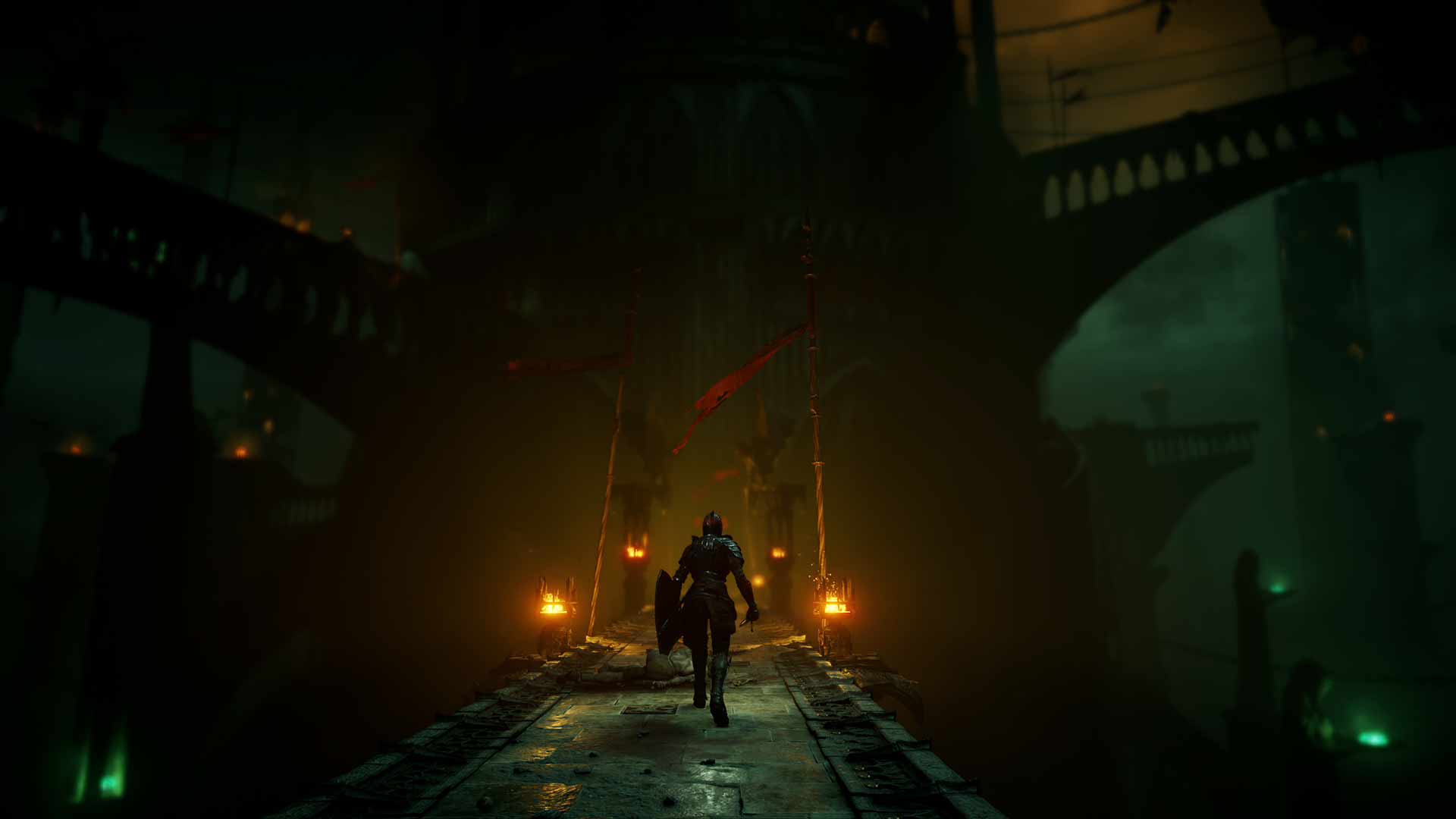
Where this remake truly impressed me, however, was with how much attention to detail was put in place and how well the remade visuals respect the original art style. I was one of those people that was concerned that the colour in the remake was going to be too much but I was pleasantly surprised to see that it was spot on. If the colour and saturation was brought up far too much, you would easily lose some of the atmosphere in the areas, but there is just enough to clearly see the incredible areas that FromSoftware conceptualised, and Bluepoint really brought to life while still maintaining that level of hostility and danger that FromSoftware games are known for. This DeS remake is truly one of the most visually gorgeous games that I have played. It may not be the most technically impressive, in terms of using crazy, performance-taxing effects like Ray Tracing or a boatload of parallax occlusion mapping, but Bluepoint perfectly understood the rendering requirements for DeS worlds and built/implemented technology around that. Lighting is crisp, fog volumes and particles look fantastic and textures are immensely detailed. This is all while having a performance-oriented mode that targets 60 frames per second. I played the game in this mode as I always prioritise performance over visuals and still its visuals blew me away. It’s a perfect balance between visual fidelity/clarity and art direction.
With that talk of visuals out of the way, we’re on to the technical performance of the game itself, which is by far one of my favourite parts of the game. I’m used to playing DeS at basically 14 frames per second. Valley of Defilement truly was the precursor to the infamous Blighttown in every regard. This remake ups the visuals while maintaining 60 frames per second pretty much the entire time. There were a couple of moments where it dipped below, but these are few and far between and I can see these performance anomalies being ironed out with later patches if Bluepoint’s diligence with post-game patches is anything to go by. Everything in the world just looks so gorgeous at 60 frames per second and there aren’t a noticeable amount of compromises, like in Assassin’s Creed Valhalla, where a large number of things on-screen actually render at a lower framerate to conserve performance. Given how reliant this game also is on reaction speed, this bumped framerate is a huge game-changer. Parries feel far more achievable now than they already did (and this game is already incredibly forgiving with parries). I did notice a few other technical hiccups while engaging in co-operative play, but the issues are honestly quite minor. Also, the load times are absurdly quick which gets you back in the action as soon as possible.
This is a PlayStation 5 launch title, so it would make complete sense for it to make proper use of the console’s new features, like the DualSense’s haptic feedback. While I didn’t have a setup to try the 3D Audio, I can at least say that the overall level of quality in the music and sound design is top-notch. The atmosphere is perfectly presented by the environment sound effects and clanging of swords through rock and metal is incredible. What I wasn’t expecting, however, was for the DualSense’s haptics to play such a large role in my enjoyment of this title. I went in kind of expecting it to be but a really good looking remake of a classic, which I would have been perfectly happy with. But now I’m not sure if I can ever go back to the PS3 version (slim chance as that was anyway). Hell, even if it ever gets brought to PC (fat chance) I’d struggle with deciding to play it there or not purely because of the haptics. You can feel when you walk over something brittle, the controller has a slight rumble to emulate the fire crackling on your sword when you apply pine resin (formerly turpentine) to it, your controller will give you a rumble when an enemy is preparing to throw a firebomb – the haptics elevate this game to a much higher level than I ever could have anticipated. One of my favourite details with the haptics is how you can feel when you hit something hard or when you slash through an enemy, but when you hit a ghost you don’t feel a thing. This sounds stupid, I know, but it’s a very careful attention to detail. While it doesn’t use the adaptive triggers, it does still use the in-built speaker in the controller to just immerse you that little bit more.

Final Thoughts
I went in expecting the world out of the Demon’s Souls remake and it delivered me the galaxy. I don’t normally speak this highly of games, but this is the one exception. Absolutely every facet of the original has been enhanced and it has stood the test of time. Bluepoint has done an incredible job at not only reinvigorating an underappreciated gem, but also leveraging the new technologies afforded to them with Sony’s new system. While there are a couple of minor technical blemishes, they don’t take away from how good of an experience this game is and Bluepoint’s diligence as a developer will surely see these kinks ironed out. This game is a system seller.
Reviewed on PS5 // Review code supplied by publisher
Click here for more information on WellPlayed’s review policy and ethics
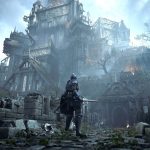
- FromSoftware / Bluepoint Games
- Sony Interactive Entertainment
- PS5
- November 12, 2020



Jordan lives and breathes Dark Souls, even though his favourite game is Bloodborne. He takes pride in bashing his face on walls and praising the sun. Hailing from the land of tacos, he is the token minority for WellPlayed.





